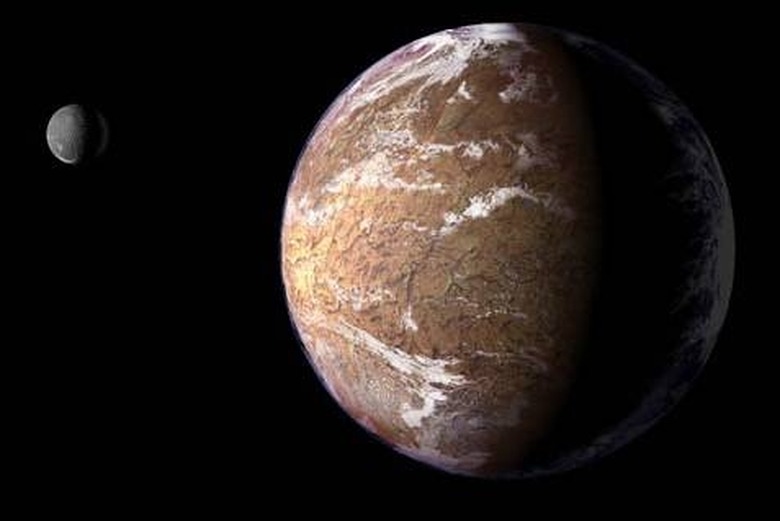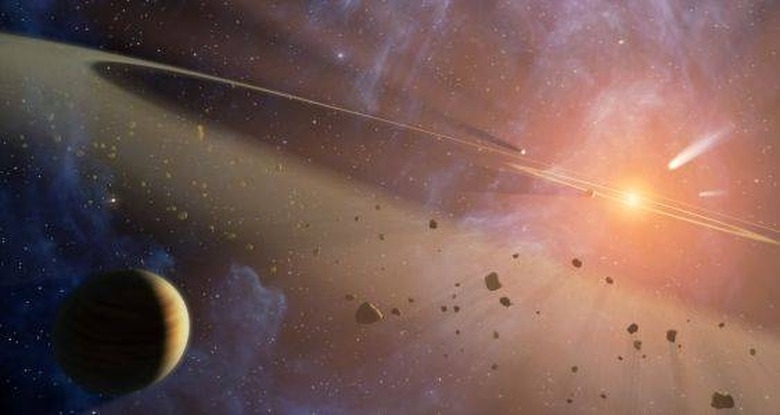How To Create Your Own Virtual Planet
Creating your own virtual planet can be purely an exercise in letting your imagination run wild. You can create your own physical laws, if you want to keep your design task simple. However, if you find the subject of alien planets and life intriguing enough, you may want to make it into a learning exercise by obeying the known laws of the universe. You can still get really creative with sentient subterranean ice slugs, respiration based on methane, or gravity so light that most creatures spend more time in the air than on the ground. You will just have to see how your choices affect others you make, and after a certain amount of tweaking, you may have a viable ecosystem you can be proud of.
Step 1
Choose where your planet will be. There is a distance from stars of different magnitudes called the habitable zone, because temperatures reach levels where liquid water is possible, but if you have your planet closer or farther away, you will need to base your future decisions on having an ice world, a steam world, or a world farther away but with a heat source beneath the surface. Orbits around single stars are most likely to be elliptical and deliver more constant climates. In binary and trinary star systems, you are more likely to get extreme temperatures.
Step 2
Decide whether your planet will have any moons, and if so, how many. More moons make more interesting skies and decrease the likelihood of meteors and comets hitting your planet, but a single moon makes tides, if you want any, a bit more consistent.
Step 3
Decide on the size of your planet. The bigger it is, the greater its gravity. If your planet is too small (like Mars), it won't have enough gravity to retain gases like oxygen and carbon. They will just dissipate into space. The really large planets are usually called gas giants, and they have no solid surface, so their topography is not going to be as interesting.
Step 4
Design a few life forms. You will need to decide how they get their energy, which usually means they will need to eat something and excrete something. You will need to figure out how they will move. For each life form, you need to make sure you have an ecosystem that allows its population to balance, so that it has enough food, some way of reducing its number when overpopulated (predators or disease perhaps), and that it reproduces at the optimal rate.
Step 5
Decide on the characteristics of each season. Most planets that rotate will have four seasons, but those with really eccentric orbits could have more extreme winters and summers. How will your life forms survive if all the groundwater freezes? How will they survive if the temperature approaches the boiling point for water?
Step 6
Decide on the topography. Here is where you get to make maps. You may get some interesting ideas of how to lay out your oceans and lakes and mountains from studying weather patterns on Earth. You may want to start out with the outline of continents (if any), ice caps at the poles (if any), and the most likely pattern for ocean currents, recognizing they would tend to flow away from the direction of the planet's rotation. Then move to the bodies of water (or ammonia or whatever liquid is most prominent on your world), remembering that liquids tend to flow from high ground (mountains) toward low ground (shorelines).
Step 7
Decide if any sentient life forms will have emerged on your planet. You may want to play around with their level of communication, their use of tools, their physical variations, and several other factors, but it is easiest if you try to develop an evolutionary track and a history for them first. If they are sufficiently advanced, you can move on to various levels of government, classes, and perhaps some unique professions.
Things Needed
- Paper
- Colored pens or pencils
- Ruler or straight edge
- Compass or forms for making circles
- Maps of weather and ocean currents on Earth
TL;DR (Too Long; Didn't Read)
In creating a world, so many things are interrelated that you should feel free to go back and revise some parts of your virtual world to accommodate others. Let the parts you find more interesting be the ones that take precedence, and then use your creativity to make other parts fit.
Cite This Article
MLA
Salzwedel, Mark. "How To Create Your Own Virtual Planet" sciencing.com, https://www.sciencing.com/create-own-virtual-planet-5143590/. 24 April 2017.
APA
Salzwedel, Mark. (2017, April 24). How To Create Your Own Virtual Planet. sciencing.com. Retrieved from https://www.sciencing.com/create-own-virtual-planet-5143590/
Chicago
Salzwedel, Mark. How To Create Your Own Virtual Planet last modified March 24, 2022. https://www.sciencing.com/create-own-virtual-planet-5143590/


